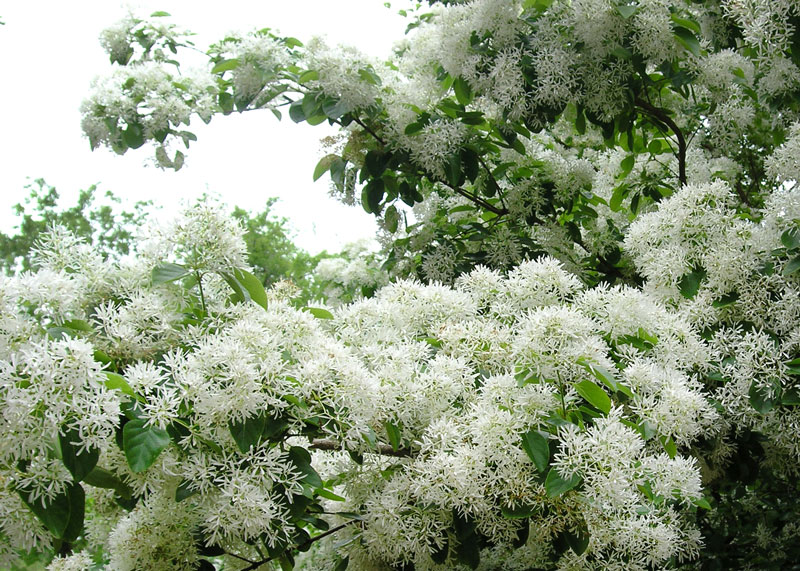Chinese fringe tree – Steve Huddleston

Here’s a handsome small tree or large shrub that’s sure to be a highlight in your landscape. And, like so many of our other fine landscape plants, its native home is in the Far East.
The basic facts…
Common name: Chinese fringe tree
Scientific name: Chionanthus retusus (from Greek words chion meaning “snow” and anthos meaning “flower”)
Plant family: Oleaceae, or olive family, which also includes oleander, ash, privet, and forsythia.
Native home: China, Taiwan, Korea, and Japan
Hardiness Zones: USDA Zones 5a-9b, meaning all of Texas
Mature size: 20 ft. tall and wide
Leaves: 4 inches long, oval in shape. Bright green top surface, whitish-green with downy undersides.
Fall color: yellowish-green or brown
Flowers: Male and female blooms are borne on separate plants. Male flowers have somewhat longer petals and are, therefore, slightly showier.
Fruit: If fertilized, female flowers give rise to 1/2-in. long olive-like fruit borne in clusters. Fruit ripens to dark bluish-black in late summer or early fall. Favored by birds and other wildlife.
Exposure preference: Morning sun, afternoon shade
Soil preference: Deep, highly organic, and consistently moist, ideally acidic.
Best landscape uses: In groupings or as a single specimen used in front of dark evergreen backdrops such as tall hollies or junipers. Excellent near a patio, in a courtyard or small landscape, or beneath power lines. Because of its strong branching structure, it can be trained as a small, single-trunk specimen tree or large landscaping shrub. Cultivar ‘Tokyo Tower’ has columnar growth for special landscaping uses.
Note: Chinese fringe trees are not common in the Texas nursery trade. You’re most likely to find one in a specialty nursery that handles exotic plants – almost assuredly an independent retail garden center and not one of the mass merchandisers. You may even have to resort to ordering it from an online source if all else fails.


